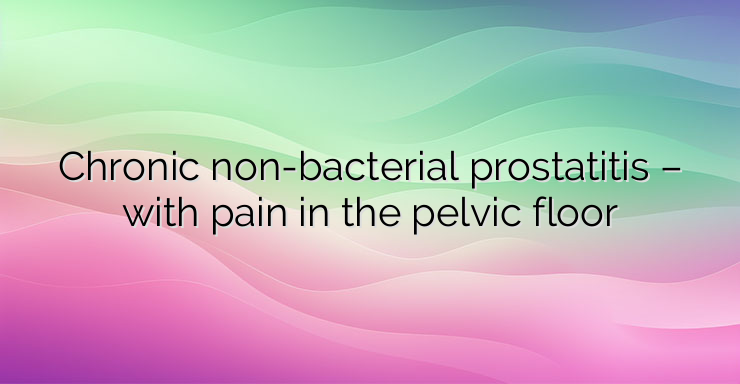Prostatitis, an inflammation of the prostate gland, is a prevalent condition, particularly among young men aged 20-40. One of its common forms is chronic non-bacterial prostatitis, which presents unique challenges in diagnosis and treatment. Let’s delve into the details to understand this condition better.
1. What is the Clinical Picture?
The hallmark symptom of chronic non-bacterial prostatitis is pain or discomfort in the pelvic floor region, persisting for around three months. This discomfort tends to fluctuate, with periods of exacerbation followed by remission. Unlike other forms, pain in chronic non-bacterial prostatitis is typically felt in both testicles simultaneously. Another specific symptom is pain after ejaculation, which distinguishes it from conditions like benign prostatic hyperplasia. While less common, some patients may experience frequent urination with burning and pain, along with difficulty urinating. It’s important to note that sexual function is usually unaffected, although some patients may experience psychogenic erectile dysfunction.
2. How is it Diagnosed?
Diagnosing chronic non-bacterial prostatitis requires a comprehensive medical examination. This includes palpation of the prostate gland, rectal douching, and ultrasound examination of the relevant organs such as the kidneys, bladder, prostate gland, and seminal vesicles. Functional tests like uroflowmetry and electromyography of the pelvic floor muscles are also conducted. Laboratory investigations involve microscopic and bacteriological examination of urine to determine the presence of infection. Additionally, prostate-specific antigen (PSA) testing may be done in patients over 45 years to rule out prostate cancer. A key diagnostic feature is the presence of increased leukocytes in secretions and urine, without evidence of a bacterial cause.
3. What can be Mistaken for Chronic Non-Bacterial Prostatitis?
Several conditions share similar symptoms with chronic non-bacterial prostatitis, including prostatitis itself, benign prostatic hyperplasia (BPH), and prostate cancer. Proper diagnosis is crucial to avoid confusion and ensure appropriate treatment.
4. What is the Treatment?
Treatment for chronic non-bacterial prostatitis focuses on managing symptoms since the exact cause often remains unclear. In the initial stages, antibiotic therapy may be attempted despite the absence of a bacterial cause. Medications with good prostate penetration are used, with about half of the cases showing improvement. If symptoms persist, alpha-1-adrenoblockers may be prescribed, providing relief in around 50% of cases. Non-steroidal anti-inflammatory drugs (NSAIDs) are commonly used to alleviate pain, although they may have side effects such as gastric irritation. In cases where pain management is challenging, antidepressants may be considered, particularly for patients with associated mental health issues. Additionally, physical therapy modalities like electrostimulation and electrophoresis are employed to manage symptoms effectively.
In conclusion, chronic non-bacterial prostatitis presents unique challenges due to its elusive nature. While the exact cause remains uncertain in many cases, effective symptom management is possible through a combination of medication, physical therapy, and lifestyle modifications. Early diagnosis and appropriate treatment are essential for improving the quality of life for individuals affected by this condition.


Leave a Reply